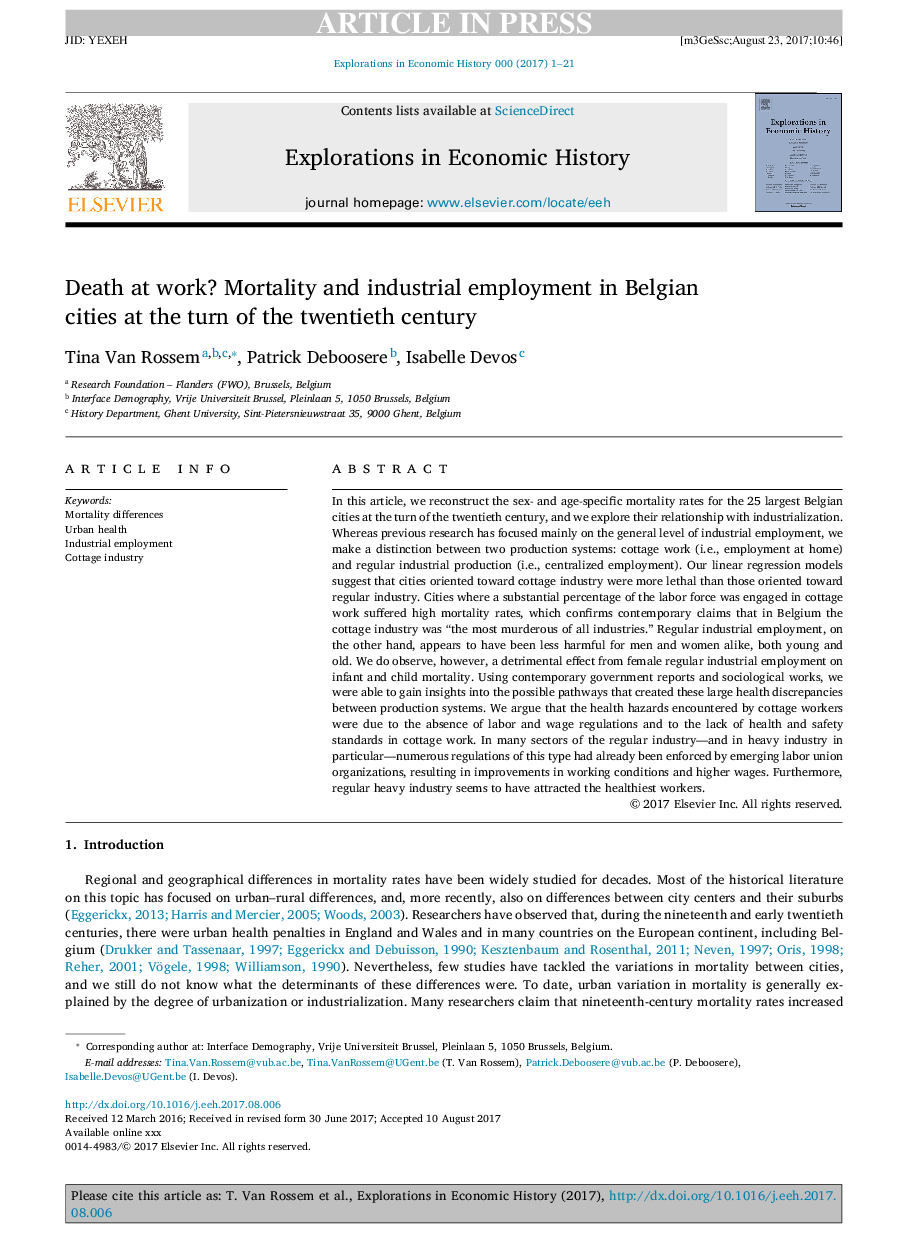ترجمه فارسی عنوان مقاله
مرگ در محل کار مرگ و میر و اشتغال صنعتی در شهرهای بلژیکی در اوایل قرن بیستم
عنوان انگلیسی
Death at work? Mortality and industrial employment in Belgian cities at the turn of the twentieth century
| کد مقاله | سال انتشار | تعداد صفحات مقاله انگلیسی |
|---|---|---|
| 87071 | 2017 | 21 صفحه PDF |
منبع

Publisher : Elsevier - Science Direct (الزویر - ساینس دایرکت)
Journal : Explorations in Economic History, Volume 66, October 2017, Pages 44-64
ترجمه کلمات کلیدی
تفاوت های مرگ و میر، بهداشت شهری، اشتغال صنعتی، صنایع روستایی،
کلمات کلیدی انگلیسی
Mortality differences; Urban health; Industrial employment; Cottage industry;

